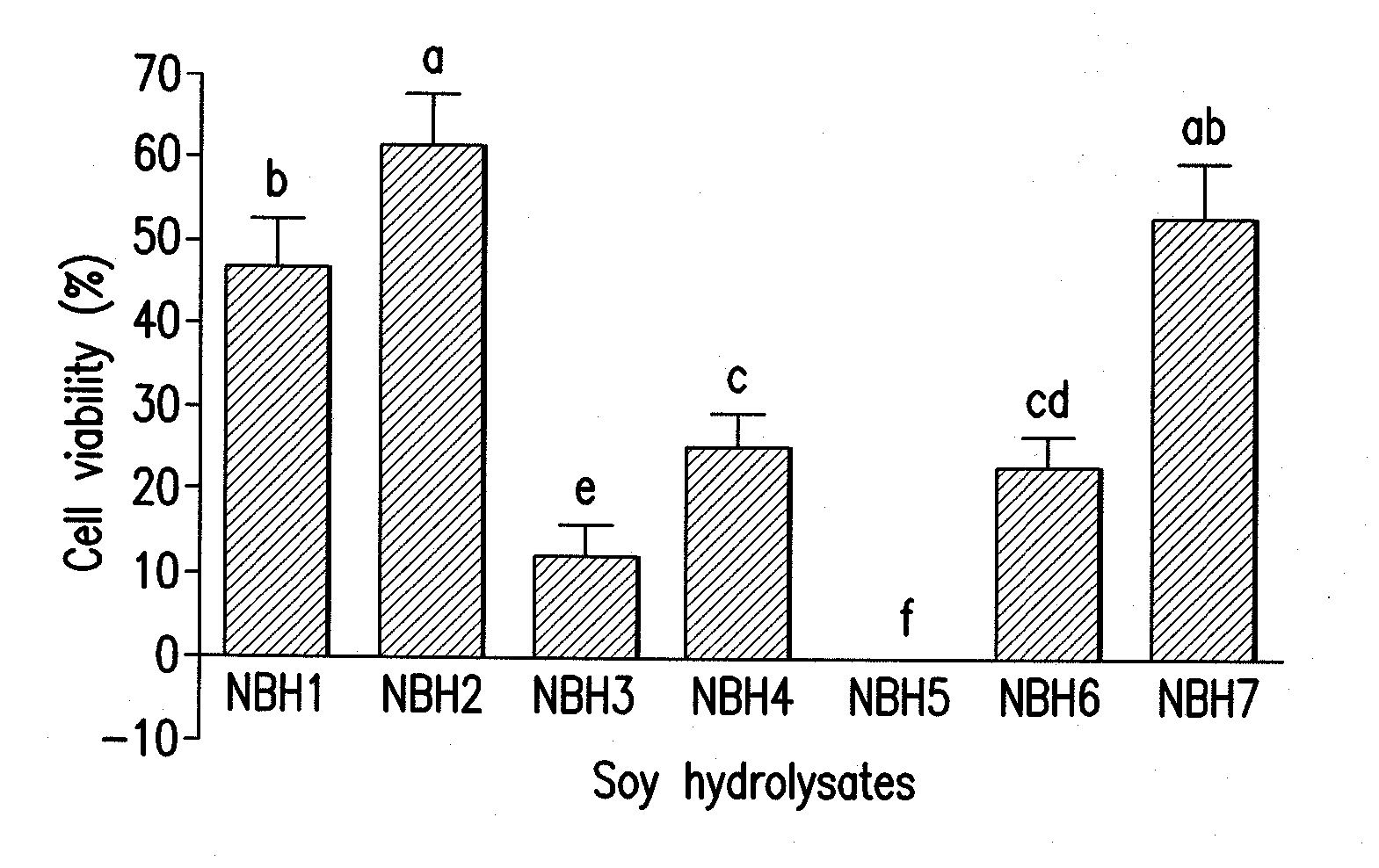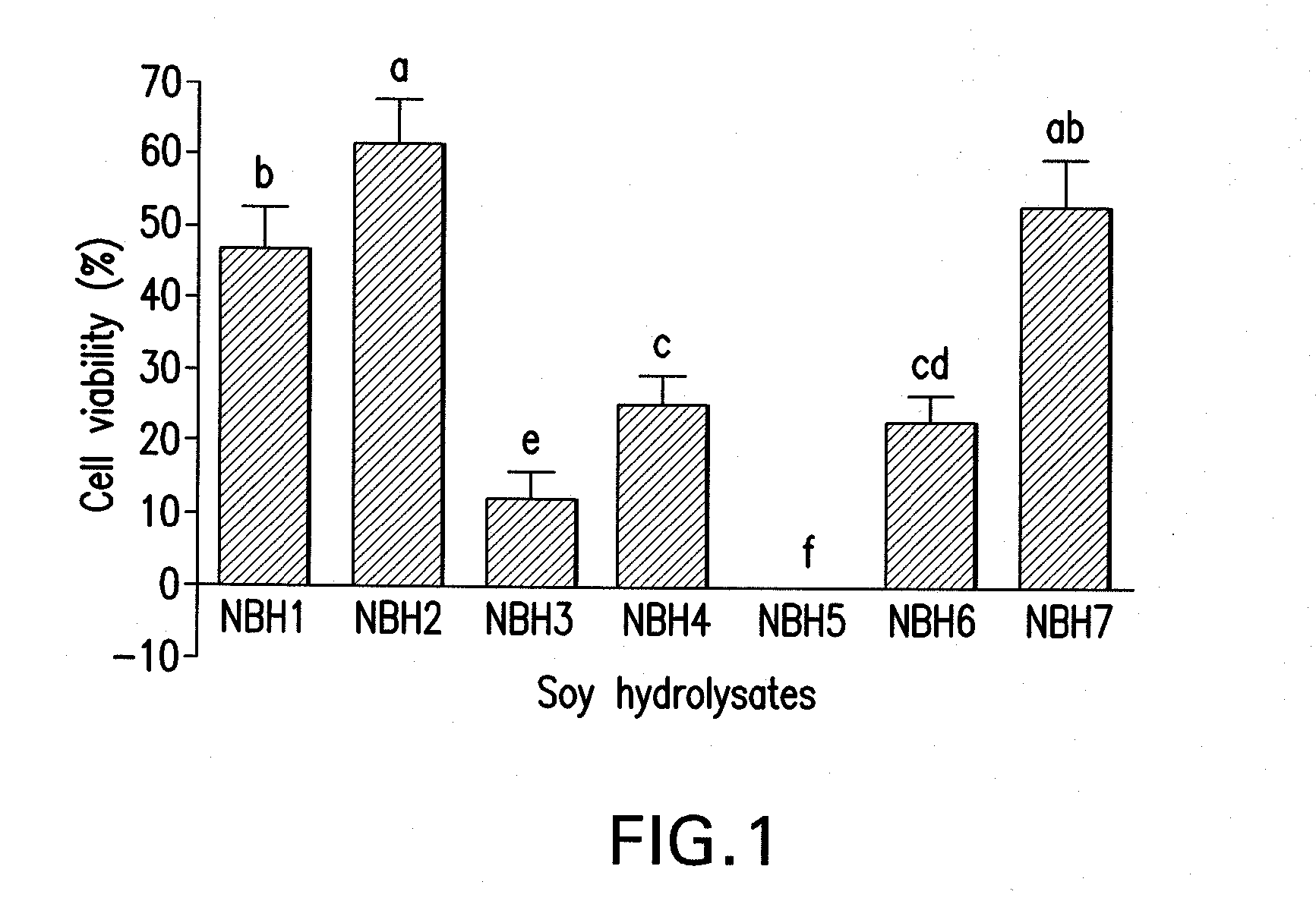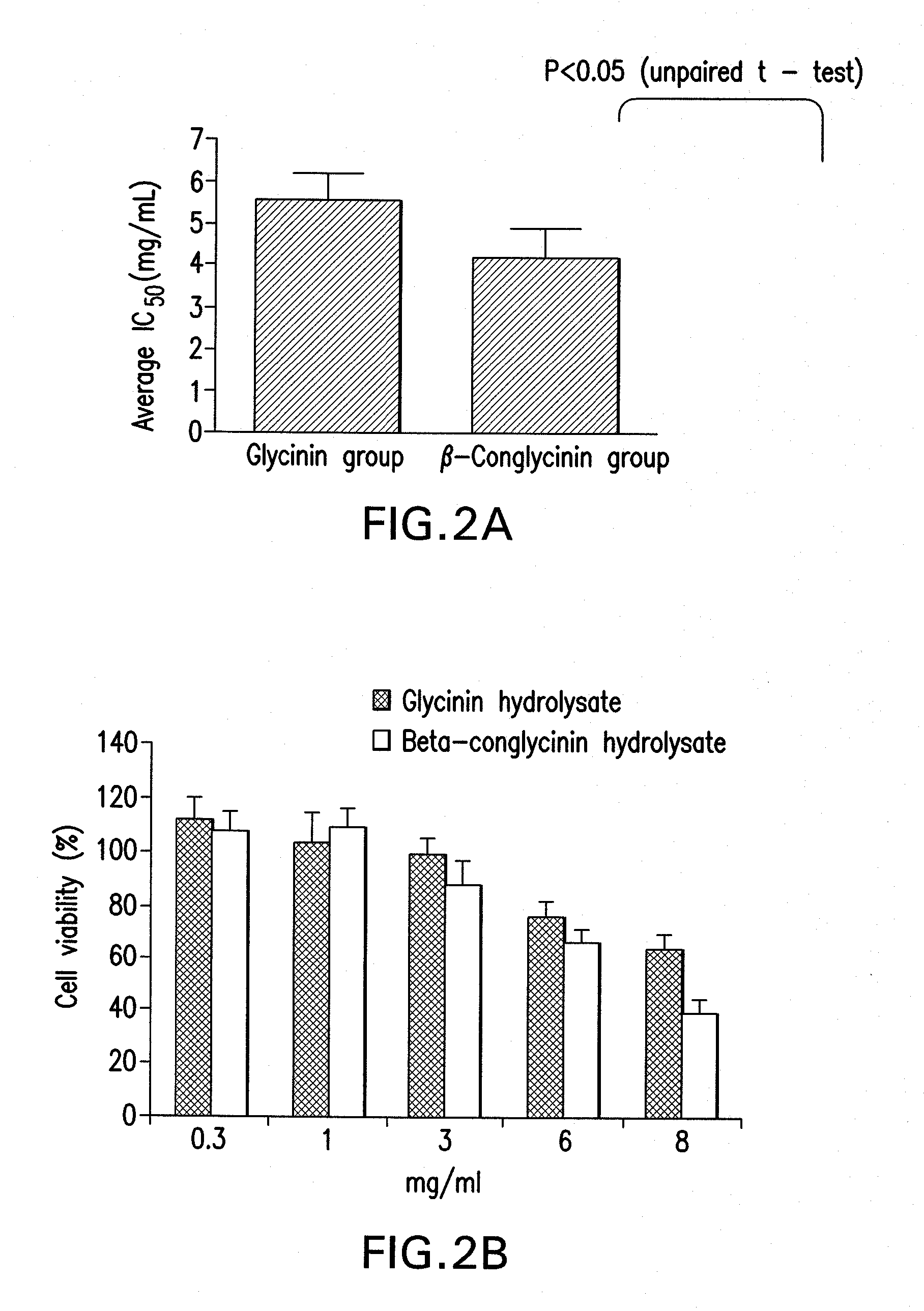Method of selecting soybeans with enhanced bioactivity and compositions for reducing cancer cell viability
a cancer cell and composition technology, applied in the field of plant breeding, can solve the problems of difficult identification of individuals that are genetically superior, difficult to accurately identify transgressive segregates or superior genotypes with the traits of interest, and difficult recovery of simultaneous molecular tools, so as to reduce cholesterol levels, reduce joint pain, and phenotype the whole
- Summary
- Abstract
- Description
- Claims
- Application Information
AI Technical Summary
Benefits of technology
Problems solved by technology
Method used
Image
Examples
example 1
Preparation of Bioactive Peptides from Soybean
[0140]Soybeans are associated with numerous benefits associated with cardiovascular health, weight management and healthy, non-cancerous cells. The properties and mechanisms associated with such benefits often involve additive and synergistic effects of multiple components within the soybean. Therefore, evaluating purified components of soybeans may provide limited information on effects on human and animal health. Therefore, it is important to examine whole soybean compositions for bioactivities, recognizing that a whole soybean that has one improved bioactivity will also continue to have multiple other bioactivities that are beneficial to health.
[0141]A number of soybean components are denatured and deactivated during industrial processing. Therefore, it was found to be critical to mimic the industrial processing to determine if bioactive proteins associated with human and animal health are still active after processing. Thermal treatm...
example 2
Soybean Varieties with Increased Anticancer Bioactivity
[0145]Seven soybean lines, NB1-NB7, were evaluated for protein composition and anti-cancer bioactivity. In vitro digestion of defatted soy flour of soybean line NB1-NB7 (0.4%-3.1% fat, dry basis, 46.5%-52.5% protein, dry basis) and purified glycinin and β-conglycinin was performed in a way to simulate the in vivo enzyme hydrolysis. Briefly, soy samples were suspended in water (1:20 w / v) and heated at 80° C. for 5 min to denature lipoxygenase. Then a sequential enzyme digestion was carried out with pepsin (EC 3.4.23.1, 662 units / mg; enzyme / flour, 1:20 (w / w); pH 2), and pancreatin (8×USP; enzyme / flour, 1:20 (w / w); pH 7.5) at 37° C. for 3 h each. The hydrolysis was stopped by heating at 75° C. for 20 min. The resulting hydrolysate was centrifuged at 27000×g for 15 min. The supernatant was filtered through 0.22 μm PVDF (polyvinylidene fluoride) membrane and lyophilized in a FreeZone® freeze dry system. The seven respective soy prote...
example 3
Soybean Varieties with Improved Bioactivity Related to Cholesterol Metabolism by the Liver
[0153]Soybean breeding lines have been developed with different functional protein composition. The LDL receptor activation of functional peptides that are produced from soybean compositions during / after passage through the gastrointestinal tract, using an in vitro model which simulates human digestion was evaluated. The conditions around oral ingested compounds (e.g. foods, ingredients) in the gastrointestinal tract are changing in time, due to the dynamic and successive conditions in the stomach and (small) intestine, whether or not as physiological reaction on the intake of the product. Accurate simulations of the in vivo conditions were performed in dynamic gastrointestinal models. The ground soybean was digested in the gastrointestinal model and exposed to cell line Hep G2 (hepablastoma derived cell line that mimics normal hepatocytes). Hep G2 was derived from Hans Princen (TNO Laboratory,...
PUM
| Property | Measurement | Unit |
|---|---|---|
| molecular weight | aaaaa | aaaaa |
| concentration | aaaaa | aaaaa |
| volume | aaaaa | aaaaa |
Abstract
Description
Claims
Application Information
 Login to View More
Login to View More - R&D
- Intellectual Property
- Life Sciences
- Materials
- Tech Scout
- Unparalleled Data Quality
- Higher Quality Content
- 60% Fewer Hallucinations
Browse by: Latest US Patents, China's latest patents, Technical Efficacy Thesaurus, Application Domain, Technology Topic, Popular Technical Reports.
© 2025 PatSnap. All rights reserved.Legal|Privacy policy|Modern Slavery Act Transparency Statement|Sitemap|About US| Contact US: help@patsnap.com



